How to Care for a Forsythia Shrub
Forsythias are popular shrubs known for their bright yellow blooms in early spring. To ensure your forsythia thrives, follow these essential care tips:
- Planting: Choose a sunny location with well-drained soil. Plant in early spring or fall.
- Pruning: Prune immediately after flowering to shape the shrub and promote new growth.
- Watering: Water regularly, especially during dry periods.
- Fertilizing: Fertilize annually in early spring with a balanced fertilizer.
Asian Origin
Forsythia belongs to the olive family, Oleaceae, its species mainly found in east Asia. Botanist Carl Peter Thunberg spotted Forsythia suspensa in a Japanese garden in the late 18th century.
By 1833 F. suspensa had made its way to Holland, and by the middle of the century, Veitch Nurseries were selling it in England.
At around the same time, Scottish plant hunter Robert Fortune discovered F. viridissima in
China.
He sent it back to the Horticultural Society (the society only became ‘Royal’ in 1861), in whose garden it flowered in 1847.
Nursery workers crossed the two species, and it was this breeding gave us Forsythia x intermedia and its hybrids, which make up most of the forsythia on offer today.
The shrub was named after William Forsyth, an Aberdeenshire man who trained at the Chelsea Physic Garden and was superintendent of the royal gardens at Kensington and St James’s Palace 1784 until he died in 1804.
He was one of the Royal Horticultural Society’s founders and great-grandfathers of landscape gardener Joseph Forsyth Johnson, great grandfather to the entertainer Bruce Forsyth.
Forsythia always looks best left to grow naturally, without pruning. So in Trees and Shrubs Hardy in the British Isles, the oracle W.J. Bean suggests sitting them:
“where they can grow freely yet are not so remote from the comings and goings of daily life that the birds can destroy their flower buds undisturbed.” So, other than avian interference, expect few problems.
The shrub featured in the 2011 film Contagion by Steven Soderbergh, prescient of the Covid-19 pandemic.
Jude Law played a conspiracy theorist who claimed a forsythia-based remedy could cure the film’s deadly virus.
Does Steven Soderbergh have a penchant for yellow spring shrubs, perhaps?
Forsythia Blooming: Factors That Influence Flowering and Tips for Encouraging Prolific Blooms
Forsythia, with its golden yellow flowers, is one of the first shrubs to bloom in early spring, making it a favorite in many gardens. However, a variety of factors, including the care it receives and the environment, can affect how forsythia blooms.
Understanding what affects forsythia’s bloom period and how to encourage vibrant flowering can ensure your plant puts on a spectacular show year after year.
1. Bloom Period
Factors
Forsythia typically blooms in early spring, often before the leaves emerge. Local climate conditions can affect the bloom period, with flowers emerging earlier in warmer regions and later in cooler regions. Depending on the area and weather, most forsythia varieties will bloom from late February through April.
Tips to Maximize Bloom Period
- Climate: Choose a variety well-suited to your growing zone for the best bloom results. Forsythia grows best in USDA zones 5-8.
- Microclimate: Plant forsythia in areas where it will be protected from harsh winter winds, which can damage flower buds.
2. Growing Zone and Climate Considerations
Factors
The growing zone plays a significant role in determining how well forsythia blooms. Forsythia shrubs are hardy in zones 5 through 8, though colder temperatures in zone 5 can affect bloom success, especially if late winter freezes damage dormant buds.
Tips for Growing in Colder Zones
- Choose varieties with hardier flower buds in colder climates, such as Forsythia ‘Meadowlark’ or Forsythia ‘Northern Gold’.
- Ensure the plant is protected during the winter months by placing it in a sheltered location, ideally where it will be insulated by snow.
- Mulching around the base of the shrub in late fall can help protect roots from extreme cold, indirectly supporting healthy flowering.
3. Flower Bud Hardiness and Late Winter Freeze
Factors
Late winter or early spring freezes can damage dormant flower buds, leading to poor or no blooms. This is particularly problematic in colder climates where forsythia can begin budding during unseasonably warm spells only to experience a cold snap.
Tips to Protect Flower Buds from Freezing
- Location: Plant forsythia in a location that receives some winter protection, such as near a building or fence, to minimize exposure to harsh weather.
- Snow Insulation: In areas with heavy snowfall, snow can act as an insulator, protecting the lower branches and flower buds from extreme cold. Make sure snow doesn’t pile too heavily on the branches, though, to avoid breakage.
4. Pruning
Factors
Pruning is one of the most critical factors in determining how well a forsythia will bloom. Forsythia blooms on old wood, meaning that the flower buds for next spring’s bloom are set during the previous growing season. Improper or late-season pruning can remove flower buds, reducing the bloom.
Pruning Tips
- Timing: Prune forsythia immediately after it has finished blooming in the spring. Pruning later in the season can remove next year’s flower buds.
- Method: Remove one-third of the oldest stems at ground level yearly to encourage new growth while maintaining the shrub’s shape. Avoid heavy, indiscriminate pruning, which can lead to a reduction in flowering.
- Rejuvenation Pruning: If your forsythia has become overgrown or isn’t blooming well, consider a rejuvenation prune, cutting the entire plant back to about 4 to 6 inches above the ground. This encourages vigorous new growth and better blooming in future seasons.
5. Sunlight Requirements
Factors
Forsythia thrives in full sun and requires at least 6 hours of sunlight daily for optimal blooming. If planted in a too shady location, forsythia will produce fewer flowers and may grow leggy.
Sunlight Tips:
- Plant forsythia in a sunny spot that receives morning light, which can help prevent frost damage.
- If your forsythia is not blooming well or shady, consider relocating it to a sunnier spot.
6. Soil and Watering Needs
Factors
Forsythia is relatively undemanding regarding soil conditions, but it does best in well-draining soil. Too compacted or poorly drained soil can stunt growth and reduce flowering.
Watering and Soil Tips
- Soil: Amend heavy or compacted soils with organic matter like compost to improve drainage. Avoid planting in areas where water tends to pool.
- Watering: Forsythia is drought-tolerant once established but will perform better with regular watering, especially during dry periods in summer. Water deeply to encourage strong root growth, but avoid over-watering, which can lead to root rot and reduced blooms.
7. Winter-Killed Branches
Factors
Some forsythia branches may be winter-killed in colder regions due to extreme cold temperatures. These branches won’t produce leaves or flowers in the spring and can detract from the overall appearance of the shrub.
Winter-Kill Solutions
- Inspect your forsythia for dead branches in early spring and remove them to encourage healthy growth.
- Winter-killed branches can be pruned back to live wood as soon as the damage is noticeable, allowing the plant to redirect its energy toward healthy growth.
8. Nutrient Deficiency
Factors
While forsythia is not particularly demanding regarding nutrients, a lack of essential nutrients such as phosphorus, which supports flower production, can lead to reduced blooming.
Fertilization Tips
- Use a balanced, slow-release fertilizer in early spring before the plant begins to bloom to provide the necessary nutrients for flower production.
- If blooms are sparse, consider using a fertilizer higher in phosphorus to encourage flowering but avoid excessive nitrogen, which promotes leaf growth at the expense of blooms.
Common Problems with Forsythia: Causes and Solutions
Forsythia is a popular, fast-growing shrub known for its bright yellow flowers that announce the arrival of spring. However, like many plants, forsythia can face several problems that affect its health and appearance.
Here are some common issues gardeners encounter with forsythia, along with possible solutions to help keep your plant healthy and vibrant.
1. Wilting and Drooping Leaves
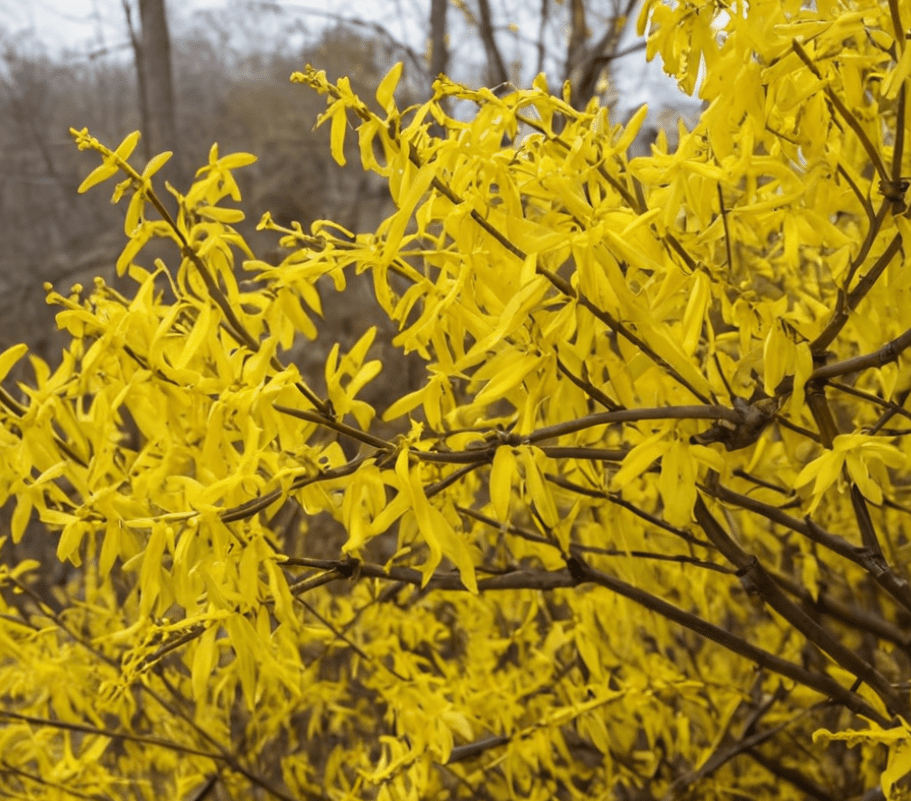
Cause:
Wilting or drooping leaves on forsythia can be due to several factors, including under-watering, root rot, or drought stress. A lack of water can cause the plant to lose turgor pressure, leading to wilting.
Solution:
- Ensure that the plant is receiving sufficient water, especially during dry spells. Water deeply to encourage root growth.
- Check the soil for proper drainage. Waterlogged soil can lead to root rot, which prevents the plant from absorbing water effectively.
- Amend the soil with organic matter to improve its water-holding capacity if it’s too sandy.
2. Leaf Curling
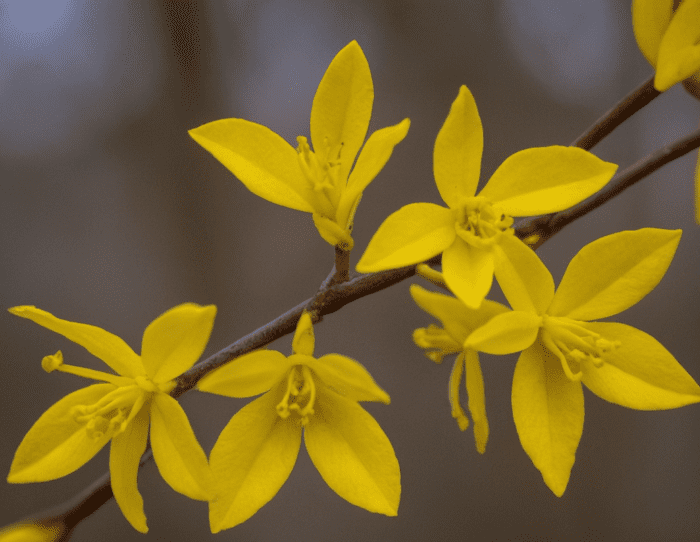
Cause:
Curling leaves on forsythia are often a result of insect infestations, such as aphids or spider mites. Both pests feed on the plant’s sap, causing the leaves to curl and become distorted.
Solution:
- Inspect the plant for signs of aphids (small, soft-bodied insects) or spider mites (tiny, often red or brown insects that leave fine webs).
- Treat infestations with insecticidal soap, neem oil, or a strong blast of water to dislodge the pests.
- Encourage natural predators like ladybugs and lacewings to control aphid populations.
3. Brown Leaf Tips

Cause:
Brown leaf tips on forsythia can indicate several problems, including under-watering, drought, or exposure to extreme temperatures. Cold damage from late spring frosts or hot, dry winds can also cause leaf tips to brown.
Solution:
- Maintain consistent watering, ensuring that the soil remains moist but not soggy.
- Mulch around the base of the plant to help regulate soil temperature and retain moisture.
- If frost damage is suspected, cover the plant with frost cloth or a sheet on cold nights during spring.
4. Powdery Mildew
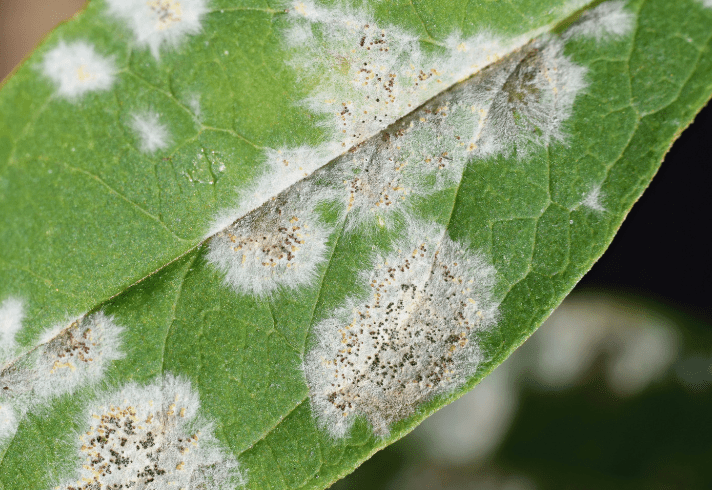
Cause:
Powdery mildew is a common fungal disease that appears as a white, powdery coating on leaves, especially in humid conditions or areas with poor air circulation.
Solution:
- Improve air circulation around the plant by pruning densely packed branches.
- Water the plant base rather than from above to keep foliage dry.
- Apply a fungicide labeled for powdery mildew if the problem persists.
5. Leaf Spot
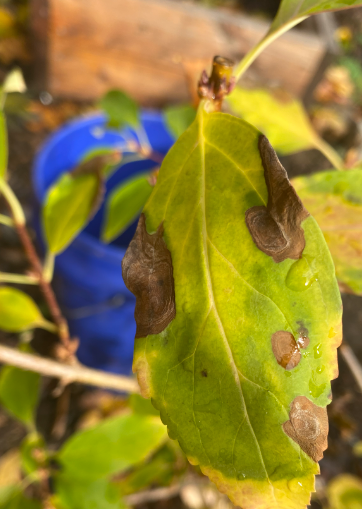
Cause:
Leaf spot, another fungal disease, causes dark brown or black spots on the forsythia leaves. It thrives in wet, humid conditions.
Solution:
- Prune affected branches and remove fallen leaves to prevent the spread of the fungus.
- Apply a fungicide, especially if the weather is wet for an extended period.
- Space plants properly and avoid overhead watering to reduce humidity around the foliage.
6. Root Rot
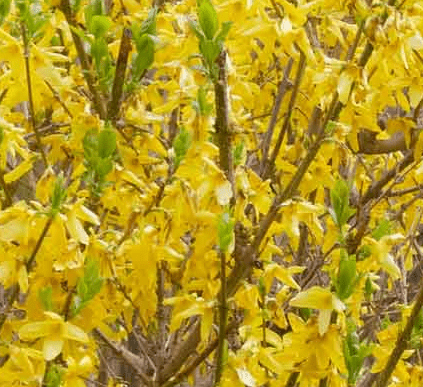
Cause:
Overwatering or poor drainage can result in root rot, which promotes fungal growth. This can cause the plant to wilt, even when the soil is moist.
Solution:
- Improve soil drainage by mixing in organic material like compost or sand to prevent water from pooling around the roots.
- Water less frequently but deeply to allow the soil to dry slightly between waterings.
- If root rot is severe, you may need to remove the affected plant and improve the drainage before replanting.
7. Aphids
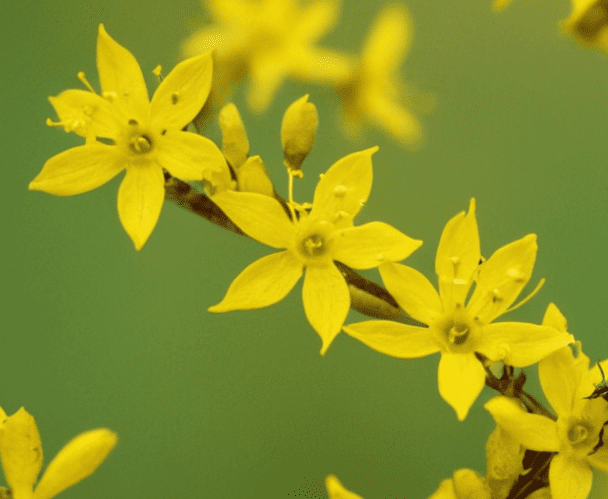
Cause:
Aphids are small, sap-sucking insects that cause forsythia leaves to curl, turn yellow, or develop a sticky residue (honeydew). They thrive in warm weather and can reproduce quickly.
Solution:
- Spray aphids off with a strong stream of water or use insecticidal soap or neem oil to control them.
- Encourage beneficial insects, like ladybugs and parasitic wasps, which feed on aphids.
- Prune heavily infested branches to limit the spread of aphids.
8. Spider Mites
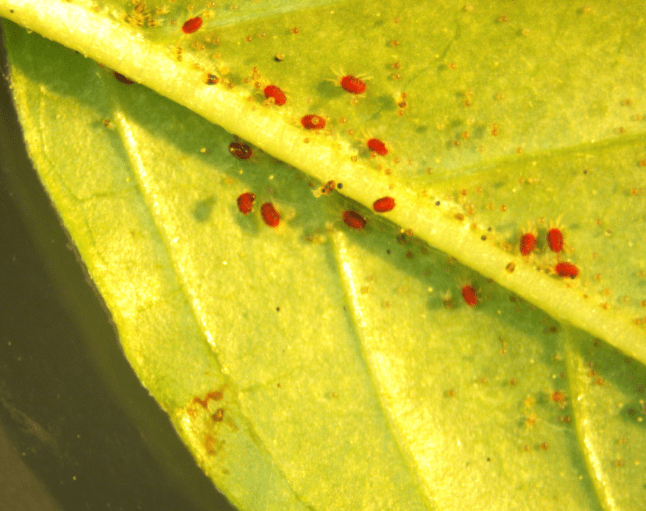
Cause:
Spider mites are tiny pests that cause stippling on leaves and can lead to leaf drop if not controlled. They are most common in hot, dry conditions.
Solution:
- Keep plants well-watered, as spider mites thrive in dry conditions.
- Use a strong water spray to knock spider mites off the plant, or treat with miticides or insecticidal soap.
- Introduce predatory mites or ladybugs to control populations naturally.
Prevention Tips for Healthy Forsythia
- Proper Watering: Ensure that forsythia plants receive regular, deep watering, especially during dry periods. However, avoid over-watering, as this can lead to root rot.
- Mulching: Apply a layer of mulch around the base of the plant to retain moisture and protect the roots from extreme temperature changes.
- Pruning: Regularly prune the plant to improve air circulation and reduce the risk of fungal diseases. Remove dead or damaged branches to promote healthy growth.
- Fertilization: Fertilize in early spring with a balanced, slow-release fertilizer to support growth, but avoid over-fertilizing, which can lead to weak growth susceptible to pests and diseases.
Forsythia Landscaping Ideas: Creative Ways to Incorporate Forsythia into Your Garden
Forsythia’s striking golden yellow blooms in early spring can be a versatile and beautiful addition to any landscape. Whether you want to create a vibrant hedge, control erosion, or add pops of color to your garden, forsythia can serve various purposes.
Forsythia Hedge for Privacy and Structure
Use
One of the most popular landscaping ideas for forsythia is using it to create a dense, vibrant hedge. Its fast growth and bushy habit make it ideal for providing privacy, marking property lines, or adding structure to your garden.
Design Tips
- Spacing: Plant forsythia shrubs 3-4 feet apart to create a dense, informal hedge. Prune the hedge annually for a more formal look to maintain a tidy shape.
- Privacy Screen: Forsythia can grow up to 8-10 feet tall, making it an excellent choice for a natural privacy screen bursting with color in early spring.
- Property Lines: Plant along property lines or fences to create a living boundary that requires minimal maintenance.
Companion Plants
Forsythia hedges pair well with plants that bloom later in the season, such as lilacs or hydrangeas, extending the interest in the landscape as forsythia flowers fade and green foliage takes over.
Foundation Planting
Use
Forsythia can be used as a foundation plant around the base of your home to add color and texture. Its bright blooms in spring and lush green foliage through summer can soften the look of your house’s foundation and create visual interest.
Design Tips
- Dwarf Varieties: Consider dwarf forsythia varieties like Forsythia ‘Gold Tide’ if you’re planting close to the house. These smaller varieties will grow to about 2-3 feet in height and won’t overwhelm the space.
- Spacing: Plant dwarf forsythia about 2 feet from the foundation to allow for healthy growth without crowding walls or windows.
- Mixed Foundation Planting: Combine forsythia with evergreens, perennials, and flowering shrubs like azaleas to create a layered foundation planting that offers year-round appeal.
Erosion Control on Slopes
Use
Forsythia’s sprawling root system and vigorous growth make it ideal for erosion control on slopes or hillsides. Once established, forsythia helps stabilize soil, preventing erosion in areas prone to runoff.
Design Tips
- Mass Planting: Plant forsythia in large groups on slopes to form a dense ground cover. As the shrubs mature, their roots will help hold the soil in place.
- Low-Maintenance Slopes: Forsythia requires minimal care once established, making it an excellent option for hard-to-reach areas on slopes where maintenance is challenging.
Companion Plants:
For additional color and texture on slopes, consider planting ornamental grasses, daylilies, or creeping groundcovers like juniper alongside forsythia to create a natural, erosion-resistant landscape.
Forsythia in Woodland Borders
Use
In woodland or shaded areas, forsythia can be planted along the edges of the garden to brighten up dark corners in early spring. Although forsythia prefers full sun, it can tolerate partial shade, making it suitable for woodland borders.
Design Tips
- Edge Planting: Plant forsythia along the edges of wooded areas to take advantage of morning sunlight while adding contrast to the greenery in the forest.
- Natural Look: Allow the shrubs to grow naturally in a more informal setting, pruning only as needed to maintain their shape. This will give your garden a more natural woodland feel.
Companion Plants
Combine forsythia with shade-tolerant perennials like hostas, ferns, or astilbes to create a layered woodland border. These plants will thrive in the dappled shade beneath taller trees.
Mixed Borders and Shrub Borders
Use
Forsythia can be used in mixed borders with other shrubs, perennials, and ornamental grasses to create a vibrant and diverse garden area. Its early bloom provides a welcome burst of color before many other plants begin to flower.
Design Tips
- Seasonal Interest: Combine forsythia with shrubs that bloom at different times of the year, such as spirea, viburnum, or weigela, to create a border that changes throughout the seasons.
- Variegated Foliage: Use variegated or colored foliage plants like Euonymus ‘Emerald Gaiety’ or Hosta ‘Fire and Ice’ to contrast with forsythia’s green leaves in the summer.
Companion Plants
Pair forsythia with spring-blooming bulbs like tulips or daffodils in a mixed border. As the bulbs fade, forsythia will fill in with lush green foliage.
Forsythia as a Decorative Container Plant
Use
While forsythia is usually planted in the ground, dwarf varieties can be grown in large decorative containers, adding height and color to patios, decks, or entryways.
Design Tips
- Dwarf Forsythia Varieties: Choose compact, dwarf varieties such as Forsythia ‘Maree d’Or’ or Forsythia ‘Gold Tide’ that grow well in containers.
- Container Size: Use large containers to allow for root development, and make sure they have proper drainage to prevent waterlogging.
- Seasonal Impact: Place containers near entrances or on patios to enjoy the early spring blooms up close. After the blooming period, the green foliage will continue to provide a backdrop for other container plants like annuals or trailing vines.
Companion Plants
Combine forsythia in containers with other spring-flowering bulbs or evergreen plants for year-round interest. After forsythia finishes blooming, you can add summer annuals to the container for extended seasonal color.
Using Forsythia as a Property Line or Privacy Screen
Use
Forsythia’s dense growth makes it an ideal choice for marking property lines or creating a natural privacy screen between homes or along driveways.
Design Tips
- Natural Privacy Screen: Plant forsythia in a staggered, informal row along property lines or fence lines. Its fast growth will quickly fill in to form a dense screen.
- Property Boundary: Use forsythia to create a natural boundary between you and your neighbors, or to divide sections of your own yard.
Companion Plants
To create a more varied and dynamic boundary screen, consider mixing forsythia with other flowering or evergreen shrubs, such as butterfly bushes or arborvitae.
FAQs
Q1: How do I prevent leaf curl on my forsythia?
Aphids and other pests are common causes of leaf curl. Regular inspection and treatment with insecticidal soap can help prevent infestations. Also, maintaining proper watering and mulching can reduce stress on the plant.
Q2: Can forsythia recover from root rot?
If caught early, forsythia may recover from root rot by improving drainage and reducing watering. However, in severe cases, affected plants may need to be removed and replanted in better-draining soil.
Q3: What should I do if my forsythia has brown leaf tips?
Extreme temperatures or drought may be the cause of brown leaf tips. Ensure the plant is adequately watered and apply mulch to regulate soil moisture and temperature.
Q4: How do I treat powdery mildew on forsythia?
Powdery mildew can be treated with fungicide, improved air circulation, and keeping the foliage dry by watering at the base of the plant.






















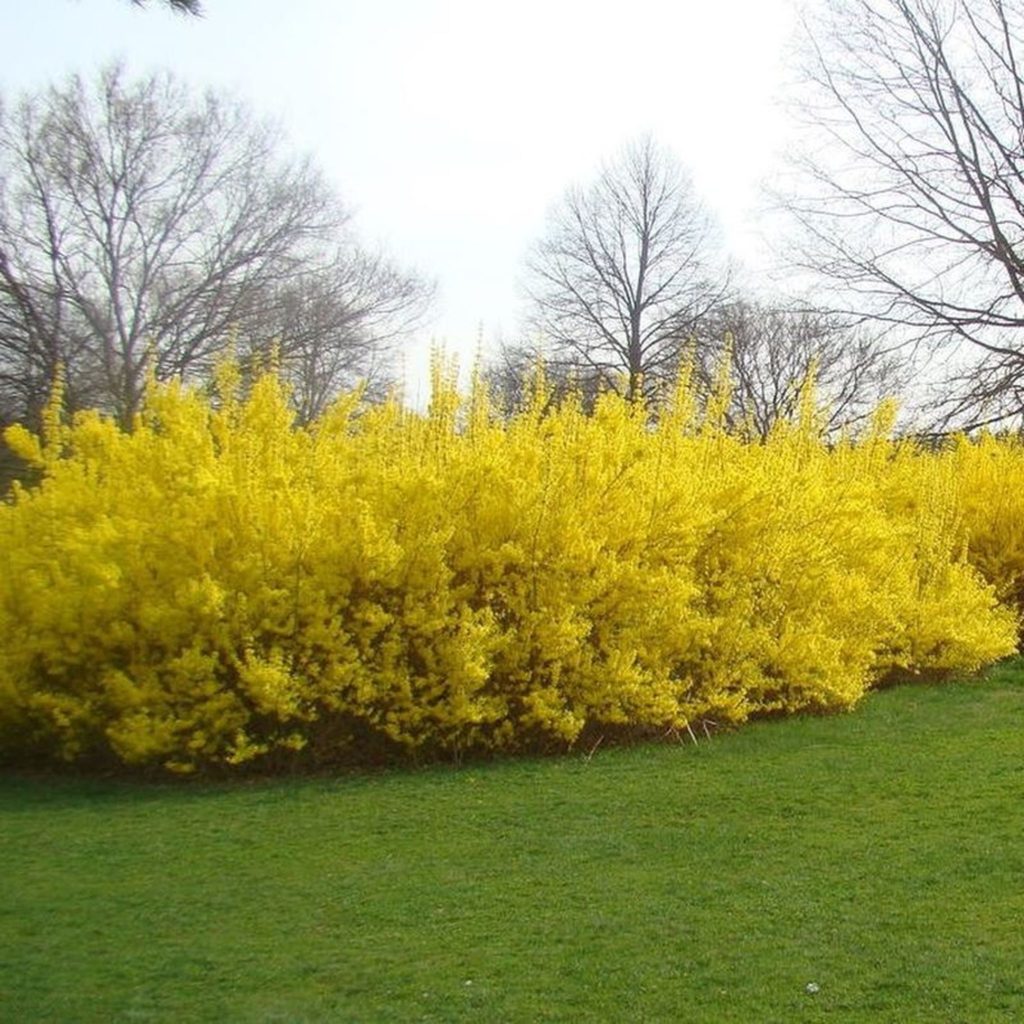







Comments are closed.